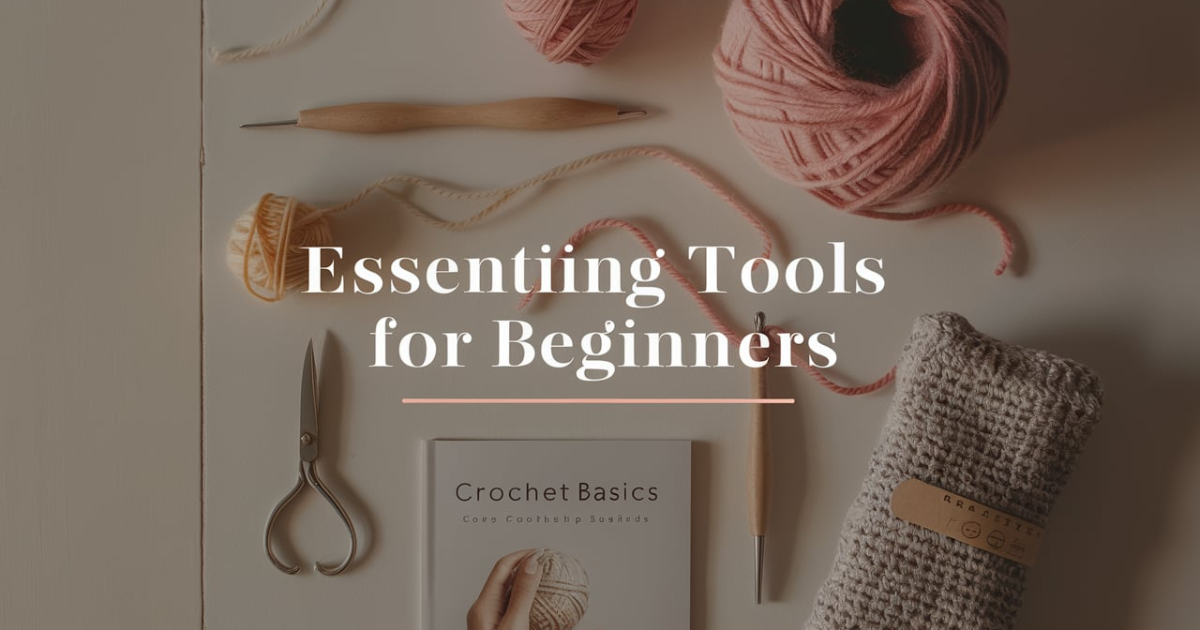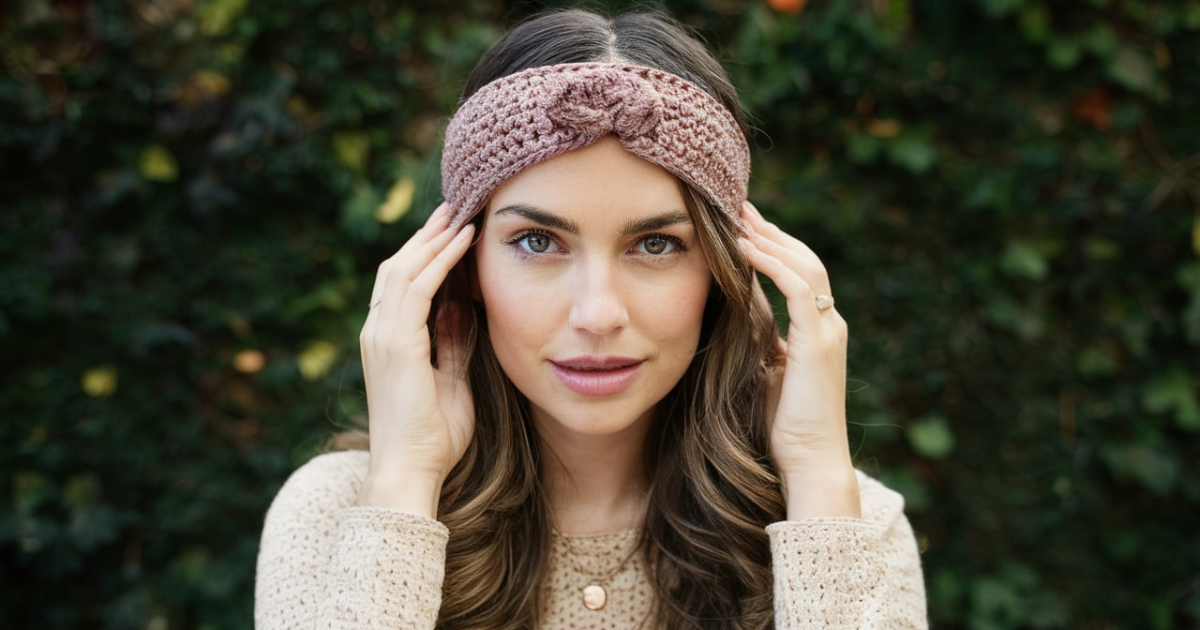Crochet is indeed the kind of varied activity, full of rewards, that has been in the hearts of crafters across generations. It is an immortal form of art where very exquisite and useful items can be turned out with no other instruments other than a hook and some yarn. Everything from warm blankets to stylish accessories is possible in crochet and is only limited by imagination.
If you are a crochet newcomer, it will be overwhelming at the beginning; there just seem to be so many patterns and ways of doing things. Fear not. This article will walk you through some easy, engaging projects any beginning crocheter can love. We are going to run through a number of easy-to-follow patterns sure to help develop your skills and boost your confidence.
Essential Tools for Beginner Crocheters
Before diving into your first project, it’s crucial to gather the necessary tools. Having the right equipment will make your crochet experience more enjoyable and successful. Here’s a list of essential items every beginner crocheter should have:
- Crochet hooks (sizes G/6 to J/10)
- Yarn (medium weight, light-colored)
- Scissors
- Tapestry needle
- Stitch markers
- Measuring tape
These basic tools will set you up for success as you embark on your crochet journey. Remember to choose comfortable hooks and soft, easy-to-work-with yarn for your initial projects.
Simple Stitch Techniques to Master
Learning a few fundamental stitches will provide a solid foundation for your crochet adventures. These basic techniques are the building blocks for countless patterns and projects. Here are some essential stitches to practice:
- Chain stitch
- Single crochet
- Double crochet
- Half double crochet
- Slip stitch
As you practice these stitches, focus on maintaining consistent tension and even spacing. Don’t worry if your first attempts aren’t perfect; with time and practice, your technique will improve.
Project 1: Granny Square Coaster
Materials Needed
For this beginner-friendly project, you’ll need worsted weight yarn in your chosen color and a size H/8 (5mm) crochet hook. Granny squares are versatile and can be used to create various items, from coasters to blankets.
Step-by-Step Instructions
- Start with a magic ring or chain 4 and join to form a loop.
- Work 3 double crochet clusters into the center of the ring.
- Chain 2 between each cluster to form corners.
- Join the round with a slip stitch to the top of the first cluster.
- Continue working rounds, increasing the number of clusters in each corner.
- Finish when your square reaches the desired size for a coaster (usually 4-5 rounds).
Project 2: Simple Scarf
Choosing Your Yarn
Select a soft, medium-weight yarn in a color you love for your first scarf project. Consider using a variegated yarn to add visual interest without changing colors.
Creating Your Scarf
- Chain approximately 30 stitches for a narrow scarf or 40 for a wider one.
- Work rows of single crochet or double crochet stitches until your scarf reaches the desired length.
- Keep your tension consistent to ensure even edges throughout the project.
- Experiment with different stitch patterns as you become more comfortable with the basics.
Project 3: Easy Crochet Headband
Materials and Sizing
Gather a skein of soft yarn and a crochet hook appropriate for the yarn weight. Measure your head circumference to determine the length of your foundation chain.
Crafting Your Headband
- Chain the number of stitches needed to fit comfortably around your head.
- Join the chain with a slip stitch to form a loop.
- Work rounds of single crochet or your preferred stitch pattern.
- Continue until the headband reaches your desired width (usually 2-3 inches).
- Fasten off and weave in any loose ends for a polished finish.
Project 4: Beginner-Friendly Dishcloth
Choosing Durable Yarn
Opt for cotton yarn, which is absorbent and durable, making it perfect for kitchen use. Select a light color to easily spot stains and dirt.
Creating Your Dishcloth
- Chain 30 stitches to create a square-shaped dishcloth.
- Work rows of single crochet or textured stitches like the moss stitch.
- Continue until your project forms a square (approximately 30 rows).
- Add a simple border by working a round of single crochet along the edges.
Project 5: Crochet Plant Hanger
Materials Needed
Gather macramé cord or sturdy cotton yarn and a larger crochet hook (size J/10 or K/10.5). This project combines crochet techniques with a touch of bohemian style.
Crafting Your Plant Hanger
- Create a long chain for the hanging loop and main body of the hanger.
- Work rows of double crochet to form the base of the plant pot holder.
- Incorporate chain spaces to create an open, net-like texture.
- Add decorative elements like tassels or beads for a personalized touch.
Tips for Success in Your Crochet Journey
As you embark on your crochet adventure, keep these helpful tips in mind:
- Start with light-colored yarn to easily see your stitches
- Practice maintaining consistent tension for even results
- Count your stitches regularly to catch mistakes early
- Don’t be afraid to unravel and start over if needed
- Join online crochet communities for support and inspiration
Remember, crochet is a skill that improves with practice. Be patient with yourself and enjoy the learning process.
Resources for Further Learning
To continue developing your crochet skills, explore these valuable resources:
- Online video tutorials for visual learning
- Local yarn shops offering beginner classes
- Crochet pattern books from your local library
- Crochet-along (CAL) projects for guided practice
- Crochet apps with stitch libraries and pattern calculators
These resources will provide ongoing support and inspiration as you progress in your crochet journey.
You Like To Read More:
Dark Academia Fashion: Embracing Scholarly Elegance and Intellectual Charm
Troubleshooting Common Crochet Issues
| Issue | Solution |
| Uneven edges | Count stitches and use stitch markers |
| Tight stitches | Relax your grip and use a larger hook |
| Loose stitches | Maintain tension and use a smaller hook |
| Curling edges | Block your finished project or adjust tension |
| Holes in work | Check for missed stitches or incorrect hook size |
FAQs
How long does it take to learn crochet?
With consistent practice, you can master basic stitches in a few weeks. More complex techniques may take longer to perfect.
What’s the difference between knitting and crochet?
Crochet uses one hook and creates more textured fabric, while knitting uses two needles and produces a smoother fabric.
Can I crochet with any type of yarn?
Most yarns work for crochet, but beginners should start with medium-weight, smooth yarns for easier handling.
How do I read a crochet pattern?
Crochet patterns use abbreviations and symbols. Familiarize yourself with common terms and practice reading simple patterns first.
What should I do if I make a mistake in my project?
Don’t panic! Carefully unravel your work to the mistake, then rework the section. It’s a normal part of learning.
Conclusion
This will be your key to a creative land of endless possibilities as you begin your crochet journey. These beginner-friendly projects set up the fundamental techniques to build on. Keep in mind to be patient with yourself and have fun in the process of learning and creating. The more confident you are, the more complex the patterns you will want to delve into, and you’ll find yourself challenging yourself with new stitches.Soon, you’ll be crafting beautiful, handmade items with pride and skill. Happy crocheting.




